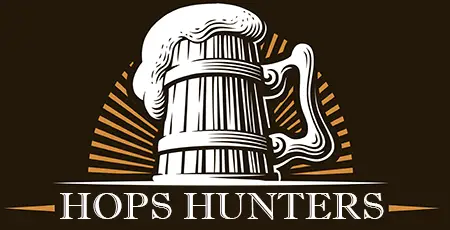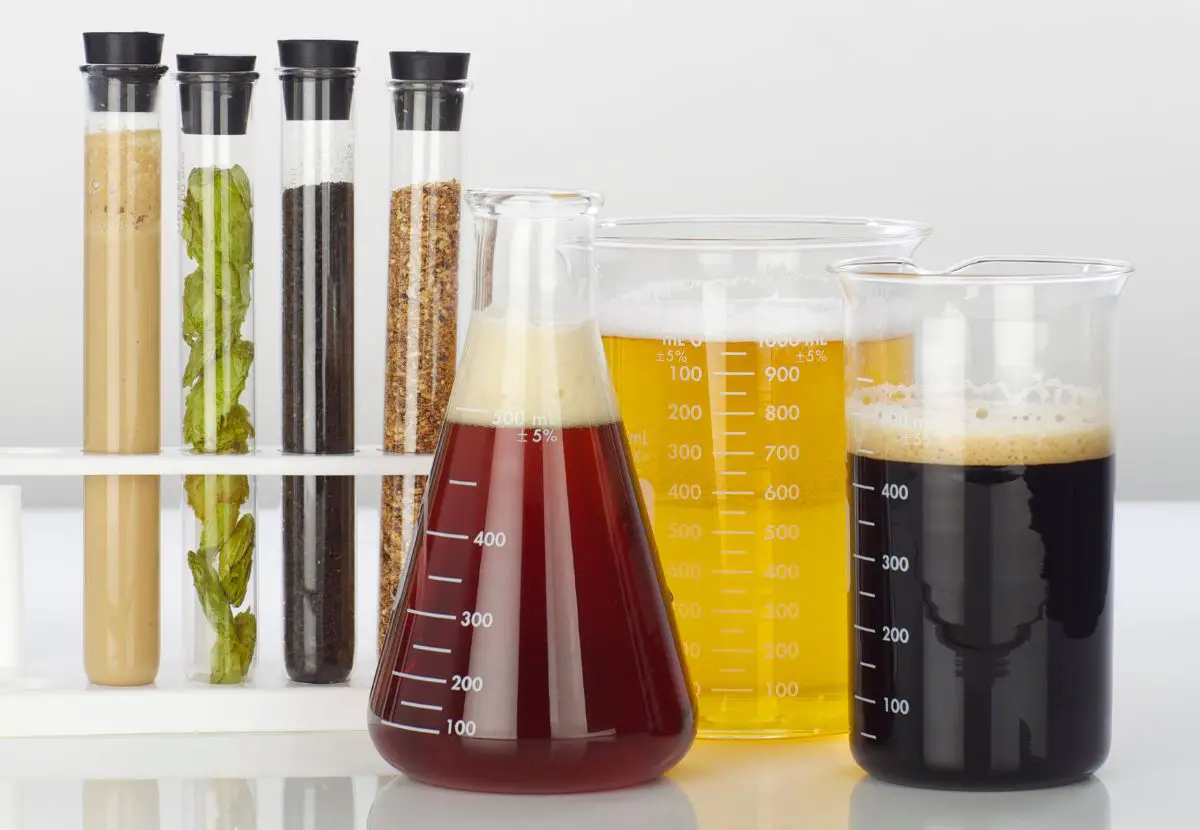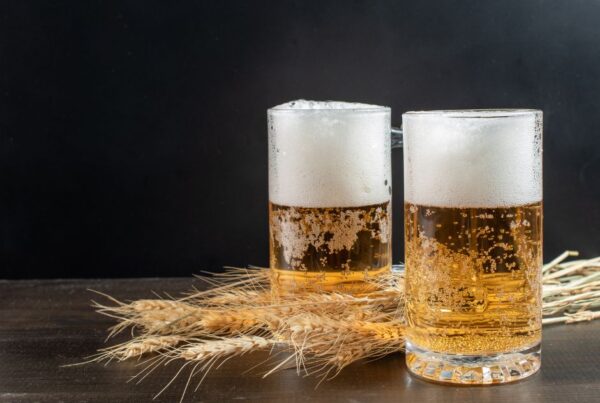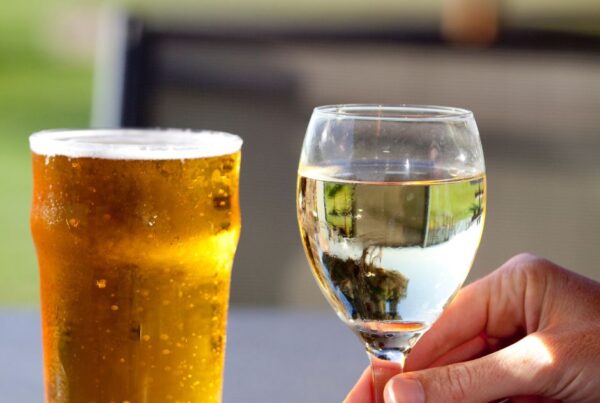Who Really Invented Beer?
Where Was Beer First Invented?
Get this: the Sumerians, those ancient guys from Mesopotamia (modern-day Iraq) who invented the wheel, the plow, and writing—to name but a few—were also the first people to brew beer.
Beer’s story goes back to around 5,000 BC, or possibly even earlier—we don’t really know. What we do know is that at some point 6 or 7 millennia ago, the Sumerians found that if you left grains in water for long enough, they’d ferment.
This way of doing things resulted in what most today would consider a “strange brew”—one that was a bit thicker and, well… “chunkier” than the lagers and stouts we’re used to today.
But despite its porridge-like consistency (and pond-like sediment) this early beer was incredibly popular. It was so valued that it was often used as a form of currency. Imagine that for a second: paying for cattle or lapis lazuli with brewskis.
Ancient Sumerians loved their invention so much they even worshiped a beer goddess named Ninkasi.
Fun Fact: The oldest written recipe in the world is a Sumerian recipe for beer, and is written in the form of a Hymn to Ninkasi on 4,000-year-old tablets.
Beer in Ancient Egypt
The Sumerians may have started the party, but it was the Egyptians who really brought the beer. They refined the brewing process, introducing the use of barley, which is still a key ingredient in the majority of beers today.
Beer wasn’t just a drink in ancient Egypt, it was considered a staple “food,” consumed by adults and children alike for nutritional purposes. It was served at mealtimes, used in religious ceremonies, and offered as a tribute to the gods.
Speaking of which, the Pharaohs were so serious about their brew, they didn’t just have a god of beer like the Sumerians—they had two: Tjenenet and Bes.
Beer in Ancient Rome
When the Romans entered the scene, things got a bit more interesting. While Romans did enjoy beer, they were more partial to wine. Beer was widely considered a beverage for the lower classes and foreigners. They even had a term for the beer-loving tribes to the North—”barbarians.”
But those “barbarians”—A.K.A. the Celts and the Germans— held onto their beer tight, refining the brewing process further, and introducing hops into the mix. They discovered that by adding hops, they could balance the sweetness of malt with some refreshing bitterness.
Hops also acted as a preservative, allowing the beer to be stored for longer periods. This was pretty much a game-changer, catapulting beer from a home-brewed beverage like coffee or tea to something that could be produced, bottled, and distributed on a large scale.
Beer in the Middle Ages
By the Middle Ages, brewing became a staple of monastery life. Monks across Europe brewed their own beer, both to consume and as a way to bring in funds.
That’s right—those pious men of the cloth weren’t just devoted to prayer and contemplation, but also to the art of brewing. Some Trappist monk breweries are actually still in operation today, producing what are widely-considered to be some of the world’s finest beers.
These holy brews are so revered that they’ve inspired a whole category of beer styles. Ever enjoyed a Dubbel, Tripel, or Quadrupel? These beer styles, characterized by their strong, rich flavors and higher alcohol content, all have their origins in the monastic breweries of the Middle Ages.
It’s enough to make you consider a life of contemplative brewing, isn’t it?
The Reinheitsgebot (Germany Lays Down the Lager Law)
In the 16th century, Germany passed the Reinheitsgebot, or “beer purity law,” which said that the only ingredients that could legally be used in the production of beer were water, barley, and hops.
It was the first real “food safety law” ever passed, but more importantly, it laid the foundation for Germany’s enduring beer culture. The law wasn’t just about keeping beer pure, though. It was also a statement of Bavarian pride.
It was basically Germany saying “We take our beer seriously here. Only the best for our steins!”
So seriously, in fact, that if any local breweries were caught adding any verboten ingredients to their beer, they risked the wrath of the law—and trust me, you wouldn’t want to get on the bad side of a German beer judge.
There’s one little detail you might have noticed—yeast wasn’t on the list of approved beer ingredients. But don’t worry, they weren’t drinking flat, unfermented barley water. Yeast was involved in beer making all along, it just wasn’t understood at the time.
Before Louis Pasteur came along in the 19th century, brewers knew something caused their beer to ferment, they just didn’t know what it was. They would often transfer a bit of the “frothy stuff” from one batch of beer to the next to kickstart the fermentation process, not knowing they were, in fact, transferring yeast.
Once the role of yeast was understood, it was added to the list of approved ingredients, making the final list: water, barley, hops, and yeast.
The Bottom of the Barrel
So, who actually invented beer as we know it today?
It’s a tough question. The Sumerians started it, the Egyptians refined it, and the Germans standardized it. And today, there are endless beer styles, flavors, and brewing techniques. From the crisp pilsners of the Czech Republic to the bitter, hoppy IPAs of the U.S. and England, the dark stouts of Ireland, and the lambics of Belgium, beer is a global phenomenon.
It’s the drink that’s been with humankind through thick and thin, from the cradle of civilization through multiple world wars; from the dawn of civilization, right up to those moments when you’re trying to pick between a “Triple Hopped Citrus Infused IPA” and a “Barrel-Aged Chocolate Stout with Himalayan Sea Salt and Lunar Meteorite Dust.”
Fun Fact: Dogfish really did brew an Oktoberfest containing crushed Lunar meteorite dust back in 2013. It was said to give the beer some unique salty, mineral-y, earthy notes—or would that be moony notes?
From its murky, ancient city-state origins to its current craft renaissance, the story of beer is the story of us. So here’s to beer—the golden thread running through the tapestry of humanity’s history. Prost!






